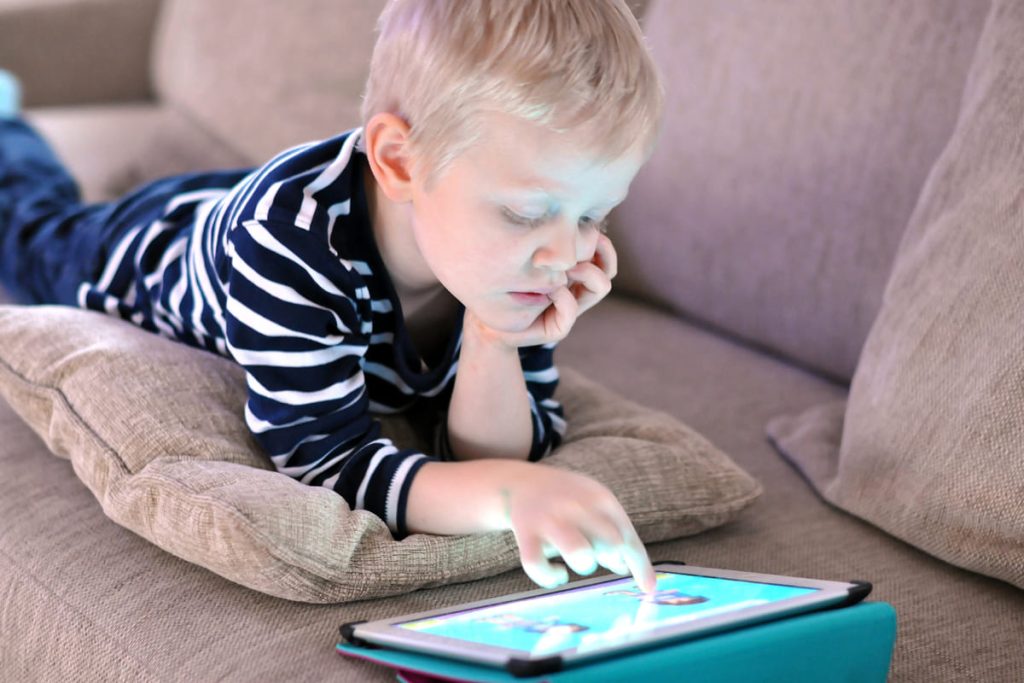Parenting
Screen Time Dilemma: Finding the Right Balance for Kids in the Digital Age

In an era where toddlers swipe screens before they can speak, the digital landscape has woven itself into the fabric of childhood. From the gentle glow of a bedtime story app to the vibrant worlds of educational games, screens are the new playgrounds and classrooms for today’s youth. Yet, as these digital interactions become as routine as the morning school bus, a critical question emerges: How much screen time is too much for our children?
Today’s Children are “Digital Natives”
They were born into a technological ecosystem augmented by new sources of media consumption each year. New and ever-changing technology is now a part of our children’s everyday lives. Whereas in the 1970s, students engaged in essential media consumption starting at four years old, today, this statistic has decreased to four months of age. Consequently, the effects of screen time have been heavily examined, including the impact on cognitive, linguistic, and social-emotional development.
Categories of Screen Time
Types of screen time impact the consequences of increasing media use among children. Social, educational, passive, and interactive activities all affect the effects of screen time in varying ways. Educational screen time is most beneficial, increasing skill acquisition and impacting the ability to persevere and learn in adversity.
Educational screen time has not been shown to affect one’s physical health. Interactive screen time, which includes playing video games, also shows positive academic outcomes, although increased interactive screen time has been shown to decrease overall wellness. Passive screen time, such as scrolling on social media platforms, negatively impacts one’s health.
Educational Upside of Screen Time
The shift towards digital learning tools, accelerated by the pandemic, has redefined the educational experience for children. Interactive online platforms, educational apps, and virtual classrooms have become integral to learning. This evolution brings a nuanced perspective to the screen time debate. While concerns about overexposure to screens are valid, it’s crucial to recognize the valuable educational opportunities these digital tools offer.
They facilitate access to a vast pool of information and cater to diverse learning styles, making education more inclusive and engaging.
The Consequences of Screen Time on Child Development
The Positive Consequences of Screen Time
Screen time has many consequences on child development, but not all effects are adverse. It can increase education and improve learning. In one study, well-designed and age-appropriate television programs with educational objectives provided an additional route to literacy among children beginning at two years of age. These programs also fostered increased cognitive development, including creative path and empathy.
Interactive media, such as early childhood learn-to-read applications and games, can also improve early literacy acquisition by providing practice with letters, phonics, and word recognition. These outcomes are best obtained through dynamic interactions with adults.
The Risk of Screen Use on Child Development
Early screen usage also comes with some developmental risks. Although causal relationships have not been confirmed or refuted, TV exposure has been associated with language delays. Background TV negatively impacts language acquisition and executive function in children under five. It also reduces the quantity and quality of parent-child interactions, decreasing opportunities for social-emotional development.
Screen use impacts early childhood development, teenage executive functioning, and academic outcomes. Media multitasking, for example, negatively impacts teens’ working memory, inhibition, and the ability to switch between tasks.
Screen Time and The Pandemic
Screen Time Before the Pandemic
A study from the CDC reports numbers on childhood screen use before the pandemic. On average, outside of school work, students ages 8-10 years old said six hours of screen time each day. From 11-14 years old, these averages jumped to nine hours. These numbers dipped with students aged 15-18, averaging 7.5 hours daily.
Screen Time Post-Pandemic
A new study states that the average time children spent on screens rose 52% during the pandemic. This is an average increase of over an hour of screen time daily. Children’s physical activity also dropped significantly during this time.
The most significant increase in screen time was observed in children ages 12-18. This is likely due to access to their devices, such as cell phones, tablets, laptops, etc. E-learning also accounts for some of the increase in technology use. Additionally, youth, like adults, did use devices to maintain social contact and avoid isolation from the outside world.
How Much Screen Time Should Children Have Each Day?
The American Academy of Pediatrics (AAP) states that although parents may desire to put an hourly limitation on screen time, there are not enough studies that suggest that quantitative parameters are sufficient to mitigate the impact of technology use on children. The evidence-based guidelines produced by AAP instead suggest qualitative guidelines for media use.
For example, children under two should only have screen time if they interact with family and friends via video chats and calls. Children ages 2-5 should co-view with a parent or sibling. Children five and older are typically only recommended up to two hours of appropriate viewing a day, except for homework. This should be married with plenty of active movement, and no one should remain sedentary for more than one hour at a time.
The digital age has ushered in an era where screens are integral to children’s lives, shaping their experiences and influencing their development. Technology has become a fundamental aspect of daily life from a very young age.
Children today are immersed in a world where screen time categories play a pivotal role in determining the consequences of media consumption. While the pandemic influenced the quantity of time dedicated to screens in households across the globe, the experience may be a more robust indicator of impact, necessitating a nuanced approach to encourage mindful engagement and active co-viewing among younger children.
